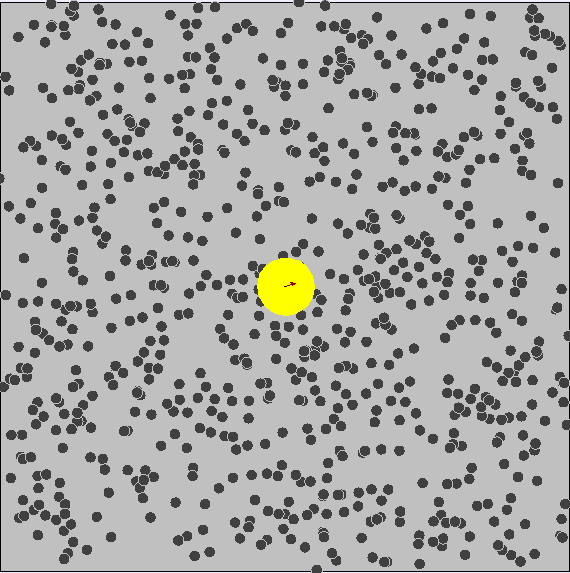States of matter (using the kinetic model of matter )
Solid
Arrangement of particles > Closely packed in an orderly arrangement
Motion of particles > Vibrate about fixed positions
Space between particles > Very little
Forces between particles > Very strong attractive forces
Liquid
Arrangement of particles > Loosely packed in an disordered arrangement
Motion of particles > Slip, slide and roll about one another
Space between particles > Little
Forces between particles > Strong attractive particles
Gas
Arrangement of particles > Very far apart in a random arrangement
Motion of particles > Move freely and randomly at high speeds in all directions
Space between particles > Very large
Forces between particles > Weak and negligible attractive forces
Brownian motion
Brownian motion is the random motion of particles suspended in a fluid (a liquid or a gas) resulting from their collision with the quick atoms or molecules in the gas or liquid.
The Roman Lucretius's scientific poem "On the Nature of Things" (c. 60 BC) has a remarkable description of Brownian motion of dust particles. He uses this as a proof of the existence of atoms:
To find out more about the Brownian motion, click here"Observe what happens when sunbeams are admitted into a building and shed light on its shadowy places. You will see a multitude of tiny particles mingling in a multitude of ways... their dancing is an actual indication of underlying movements of matter that are hidden from our sight... It originates with the atoms which move of themselves [i.e., spontaneously]. Then those small compound bodies that are least removed from the impetus of the atoms are set in motion by the impact of their invisible blows and in turn cannon against slightly larger bodies. So the movement mounts up from the atoms and gradually emerges to the level of our senses, so that those bodies are in motion that we see in sunbeams, moved by blows that remain invisible."
Here is a stimulation of the Brownian motion i found on Google.
Diffusion
Diffusion is the net movement of a substance (e.g., an atom, ion or molecule) from a region of high concentration to a region of low concentration. This is also referred to as the movement of a substance down a concentration gradient. A gradient is the change in the value of a quantity (e.g., concentration, pressure, temperature) with the change in another variable (e.g., distance). For example, a change in concentration over a distance is called a concentration gradient, a change in pressure over a distance is called a pressure gradient, and a change in temperature over a distance is a called a temperature gradient.
To find out more on diffusion, click here
Here is a picture of Diffusion i found on Google
Inertia
Inertia is the resistance of any physical object to any change in its state of motion, including changes to its speed and direction. It is the tendency of objects to keep moving in a straight line at constant velocity. The principle of inertia is one of the fundamental principles of classical physics that are used to describe the motion of objects and how they are affected by applied forces. Inertia comes from the Latin word, iners, meaning idle, sluggish. Inertia is one of the primary manifestations of mass, which is a quantitative property of physical systems.Isaac Newton defined inertia as his first law in his Philosophiæ Naturalis Principia Mathematica, which states:
The vis insita, or innate force of matter, is a power of resisting by which every body, as much as in it lies, endeavours to preserve its present state, whether it be of rest or of moving uniformly forward in a straight line.
In common usage the term "inertia" may refer to an object's "amount of resistance to change in velocity" (which is quantified by its mass), or sometimes to its momentum, depending on the context. The term "inertia" is more properly understood as shorthand for "the principle of inertia" as described by Newton in his First Law of Motion: that an object not subject to any net external force moves at a constant velocity. Thus, an object will continue moving at its current velocity until some force causes its speed or direction to change.
On the surface of the Earth inertia is often masked by the effects of friction and air resistance, both of which tend to decrease the speed of moving objects (commonly to the point of rest), and gravity. This misled classical theorists such as Aristotle, who believed that objects would move only as long as force was applied to them.
To find out more on inertia, click here
Here is a video on Youtube about inertia. Enjoy!
Thank you for reading!



No comments:
Post a Comment